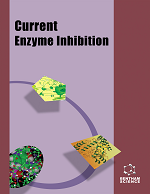
Full text loading...
Breast cancer is a leading cause of death among women worldwide. The limitations of current therapies, drug resistance, and toxicity emphasize the urgent need for targeted therapeutic agents. The 4H-chromen-4-one scaffold has emerged as a promising framework for developing potent anticancer agents, particularly against MCF-7 breast cancer cells. This study investigates the anticancer potential of 4H-chromen-4-one derivatives against the MCF-7 breast cancer cell line using computational modelling.
QSAR models were constructed using PaDEL molecular descriptors using conventional QSARINS software and state-of-the-art machine learning techniques.
The QSAR model through QSARINS demonstrated strong predictive performance with a leave-one-out cross-validated R2 (Q2loo) value of 0.7790 (internal validation) and a squared correlation coefficient of the test set (R2ext) value of 0.5049 (external validation). Whereas, machine learning models yielded R2 values of 0.6614, 0.9404, 0.9093, 0.9093, and 0.714 for random forest, support vector regression, multiple linear regressions, partial least squares, and ordinary least squares, respectively.
Key molecular descriptors contributing significantly to the model included MATS2e (electronic descriptor), SCH-5 (topological descriptor), and minaasC (electronic descriptor), indicating their importance in breast cancer activity. The predicted pIC50 values for the 4H-chromen-4-one derivatives from QSARINS and machine learning techniques fit well within the chemical space, further validating the models.
This study highlights the potential of 4H-chromen-4-one derivatives as leads for anticancer drug development. The identified electronic descriptors are essential for their activity and can guide structural optimization. Further in vitro and in vivo studies are warranted to validate their therapeutic potential.

Article metrics loading...

Full text loading...
References


Data & Media loading...

